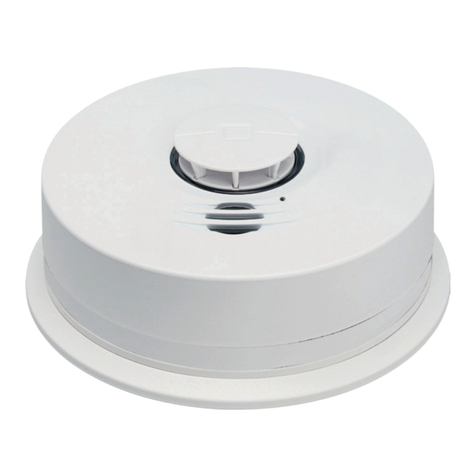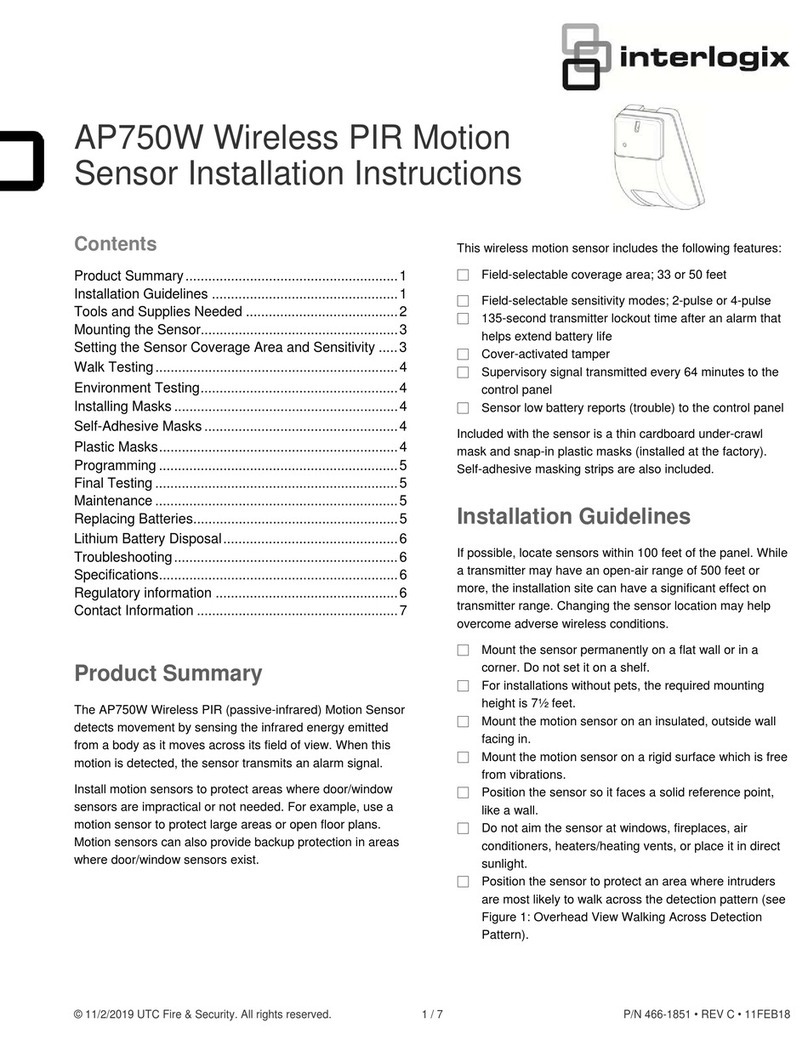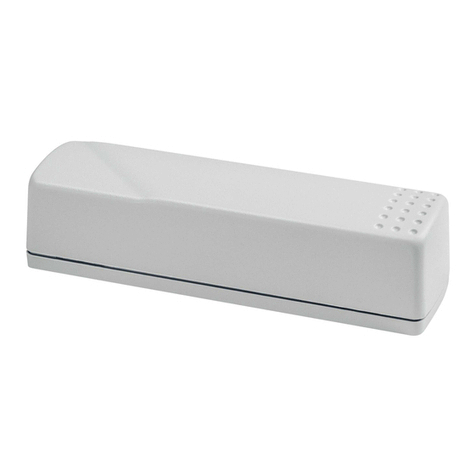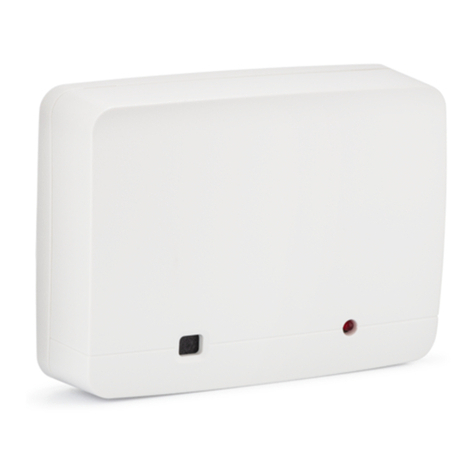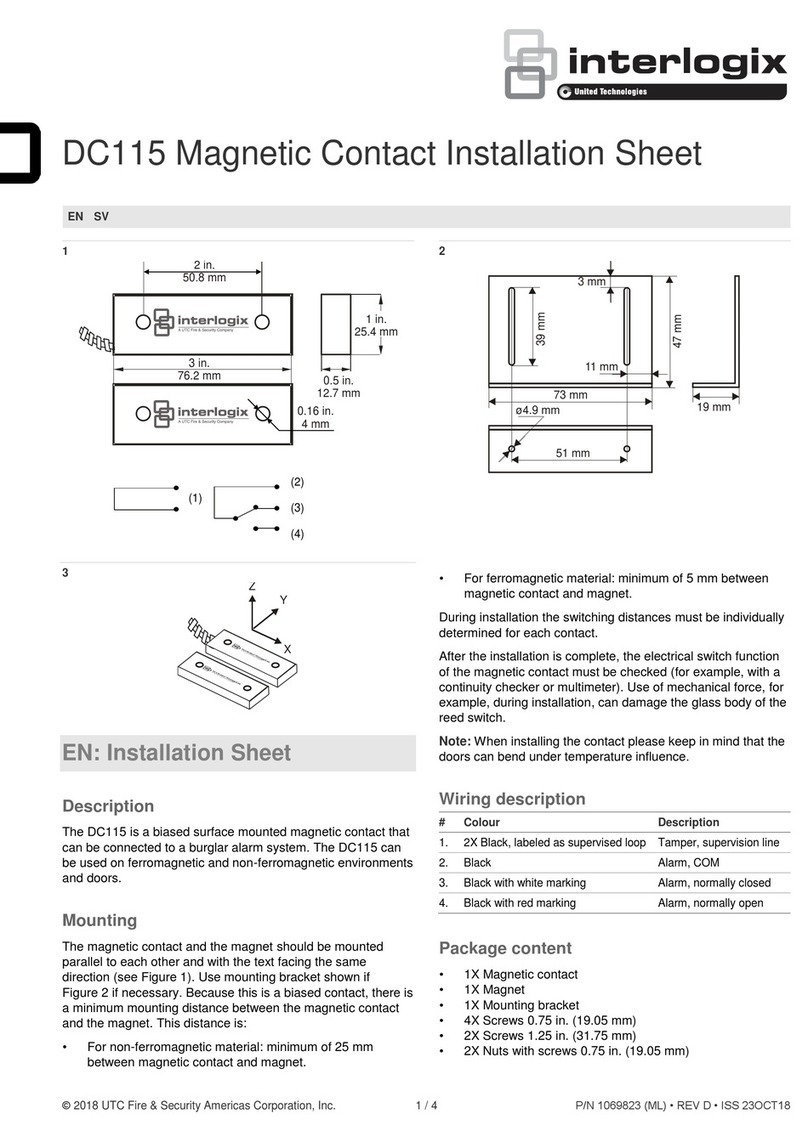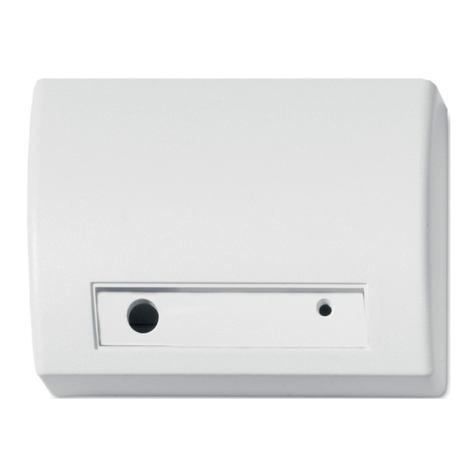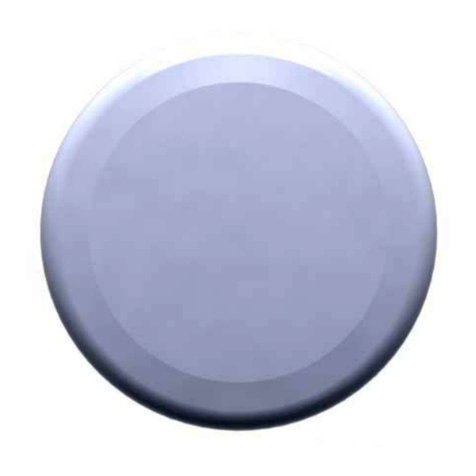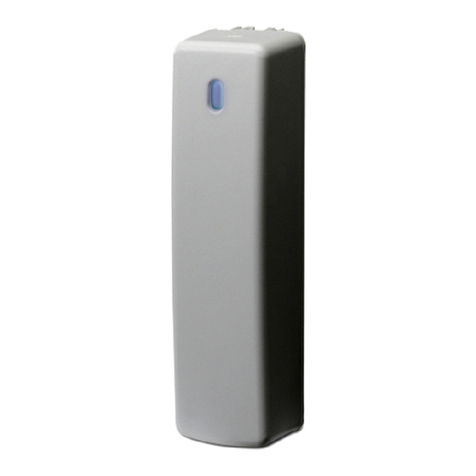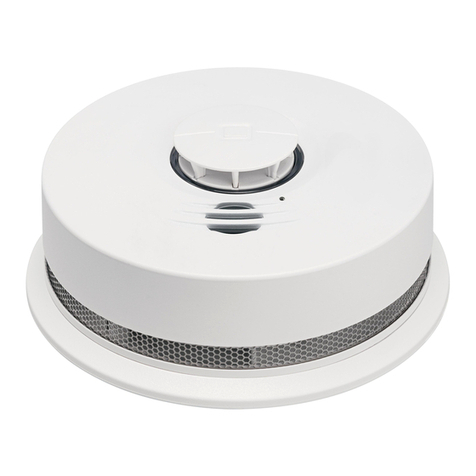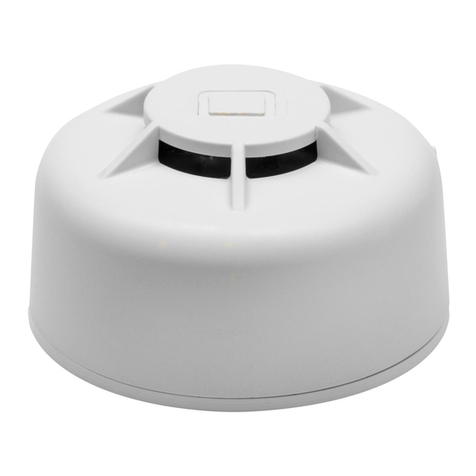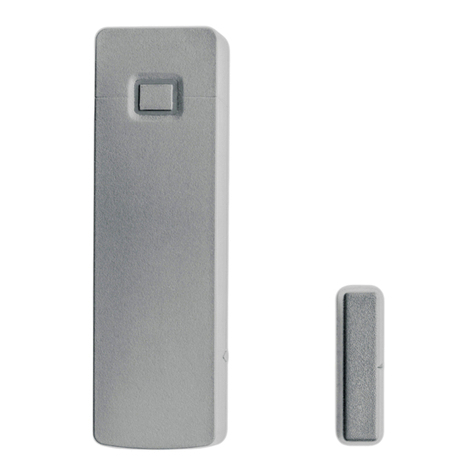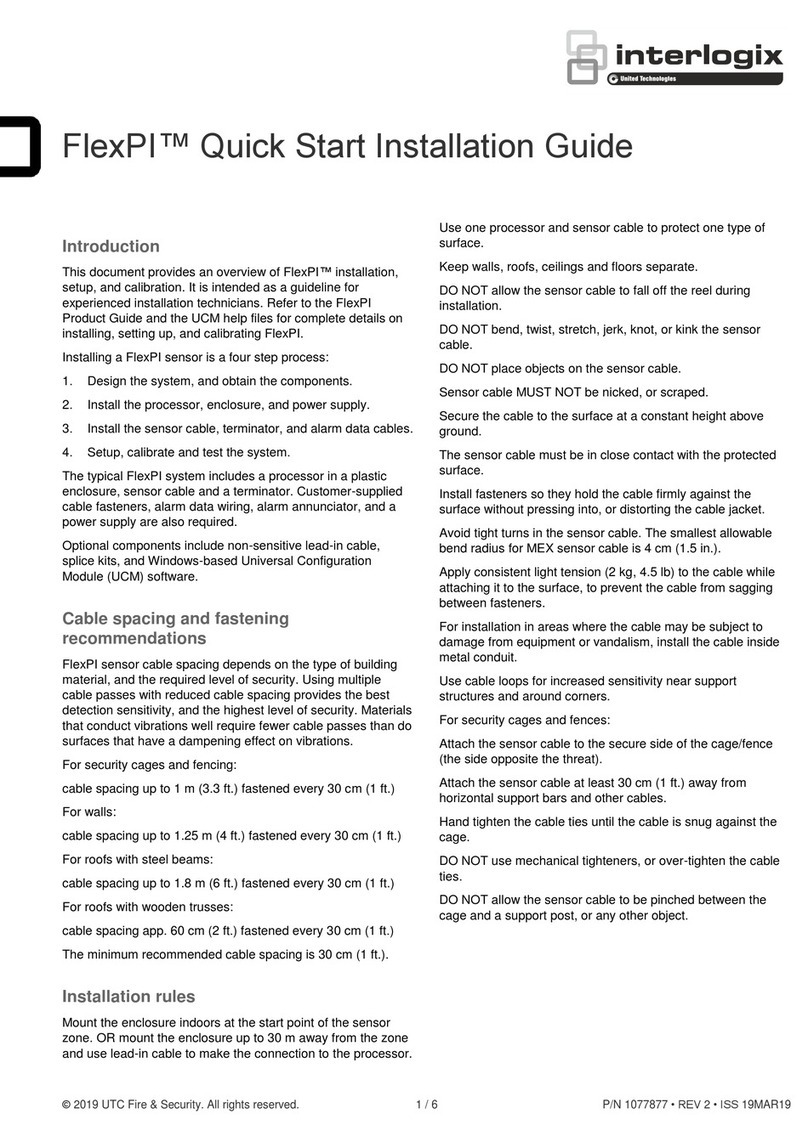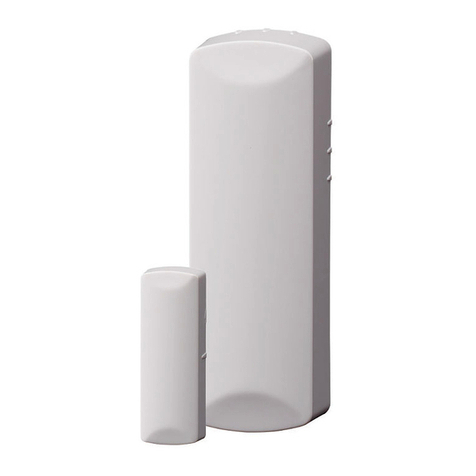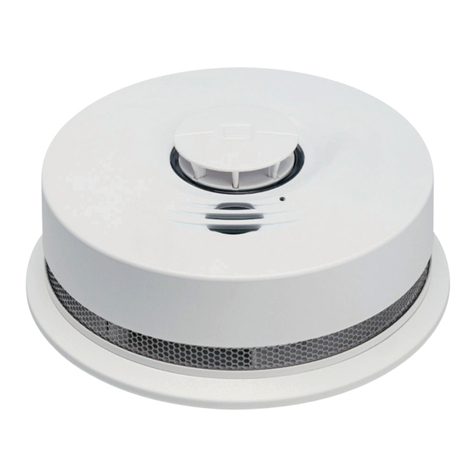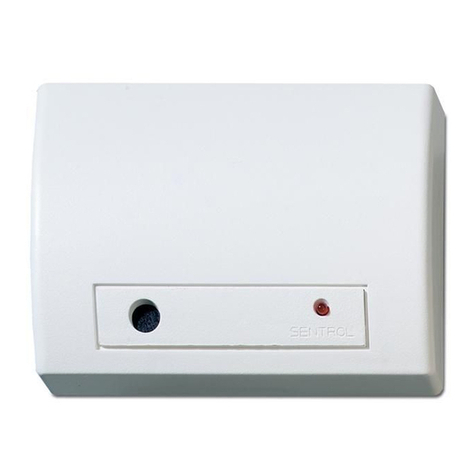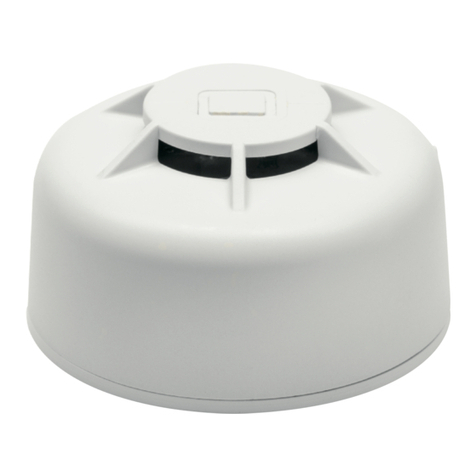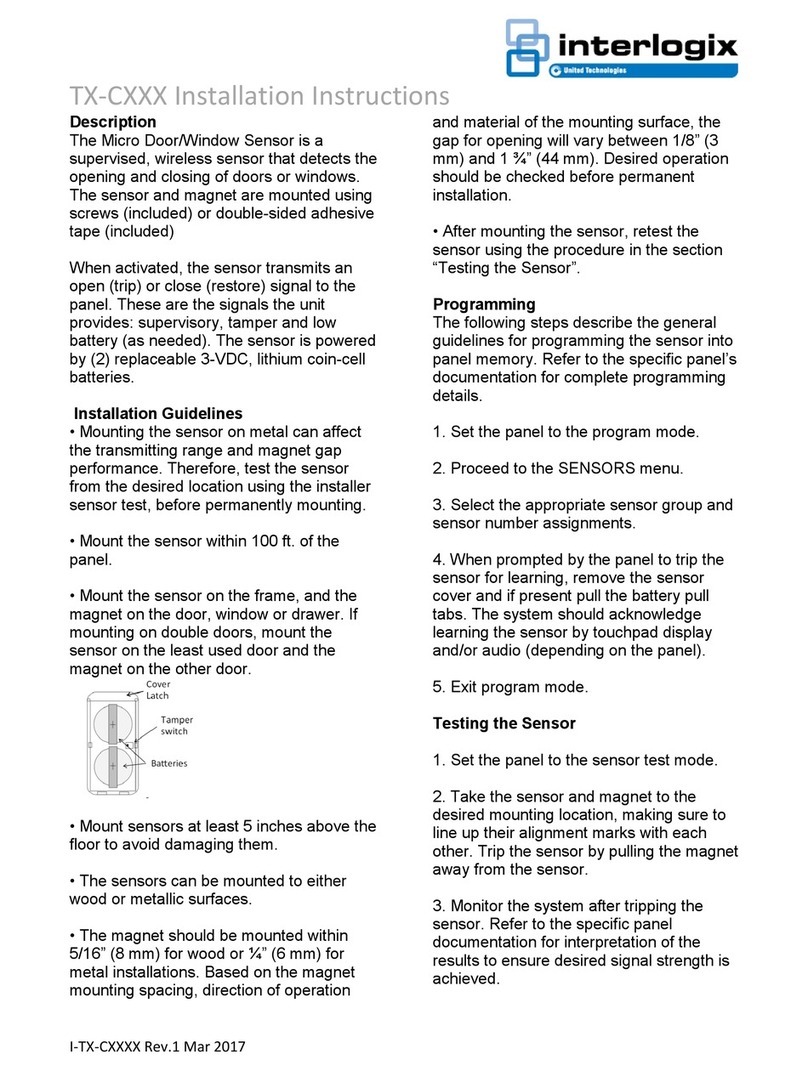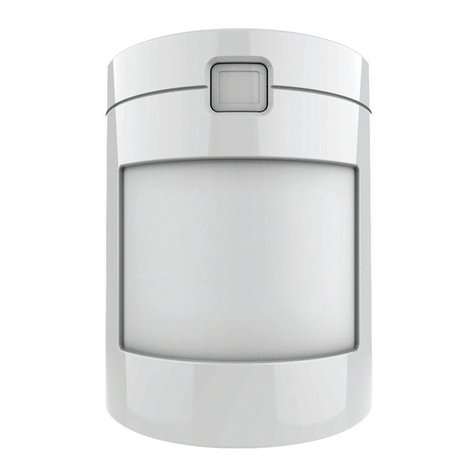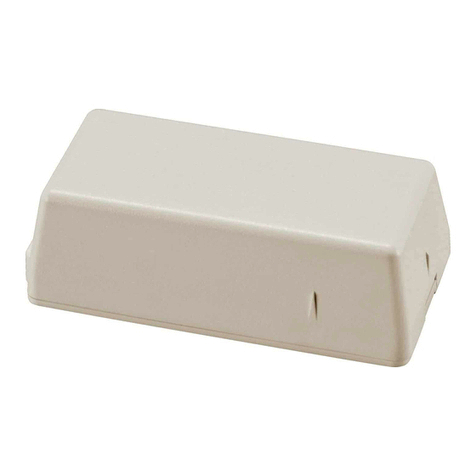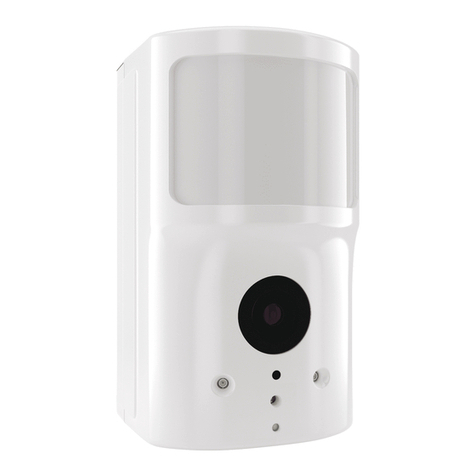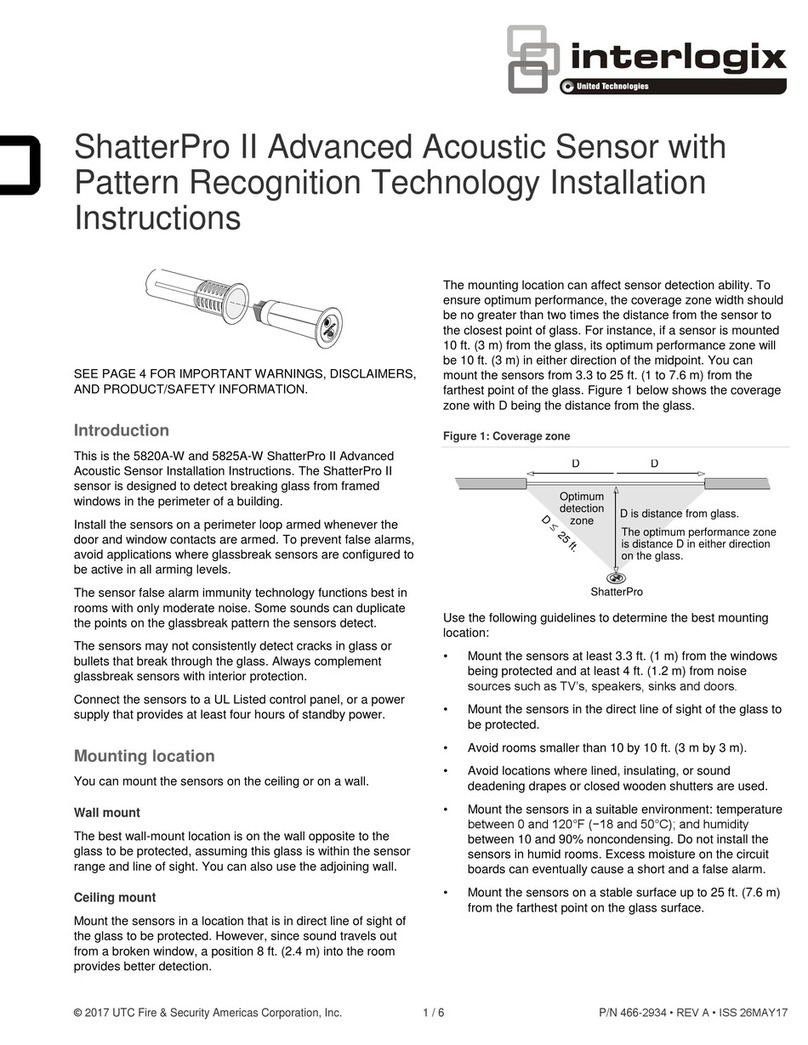
4 / 6 P/N MK256 • REV 01 • ISSUE 2 • AJM
Testing the device
Siren and signal integrity test
Test each device to verify that siren and signal integrity
responses are adequate.
Caution: When testing the siren’s sounder pressure levels,
hearing protection should be worn to prevent hearing damage.
Note: Refer to your control panel documentation for detailed
information on system response.
To test the siren, sensor and signal integrity:
1. Put the control panel into the corresponding test mode.
2. Press and hold the device’s Test button. The LED will
flash amber once every second.
3. After four seconds, the device sounds the selected tone to
confirm test success. This test tone is at a reduced volume
to the alarm condition to avoid excessive exposure to the
user during test. The device will send test confirmation to
the control panel. Reception of the signal will confirm
signal integrity. The LED will begin to flash red once every
second (up to a total of fifteen seconds). NOTE: If the
user continues to hold the button for a total of 15 seconds
the remote monitoring alarm signal is sent and the
sounder stops sounding. The LED will illuminate
continuously red for several seconds.
4. Should the device fail the test, it will not sound and a fault
signal will be sent to the control panel. The LED will
continue to flash amber. The device will also chirp once
every 45 seconds to confirm a fault condition. If the device
fails the test, return the unit for service.
5. Upon completion, exit the test mode at the control panel.
Detector test
Caution: To avoid a fire department dispatch, contact the
remote monitoring station or put the control panel into the
corresponding test mode before performing this test.
Detectors should be tested annually using canned smoke (for
smoke detectors only). Follow the instructions on the can.
Heat detectors can also be tested, using heat detector testers.
During the test, the status LED is on and the device sounds the
selected tone. The device automatically resets when smoke is
no longer present.
If the device fails to activate, return the unit for service.
Maintenance
Replacing the batteries
Insert a minimum of two specified batteries, whilst observing
the correct polarity. Up to four batteries can be fitted for
extended battery life.
When batteries are low, the device’s status LED remains off
and the device chirps 3 times in quick succession every 45
seconds until the batteries are exhausted. Replace batteries
immediately.
Note: The low battery alert can be silenced for 24 hours by
pressing the Test button for one second.
Always test the device after replacing the batteries.
Sensor maintenance
Remove dust cover before use.
The device should be tested upon installation and in
accordance with local requirements.
Testing should only be carried out by a fully trained competent
person.
The Manufacturer recommends regular functional testing of at
least once per annum or in accordance with local codes of
practice.
Caution: Do not open the case to clean inside the detector.
The detector cannot be cleaned. If the device’s sensor has a
contamination fault, it should be replaced.
Limitations of smoke / heat alarm detectors
WARNING: Risk of personal injury or death. Smoke / heat
detectors can not provide warnings for fires resulting from
explosions, smoking in bed or other furniture, ignition of
flammable liquids, vapors and gases, or children playing with
matches or lighters. Failure to properly install, test and
maintain detectors and associated alarm systems may cause it
to fail, resulting in loss of life or property.
Smoke / heat detectors may not work under all conditions.
Smoke / heat alarms can not provide total protection of life or
property and are not a substitute for insurance. All alarms are
subject to possible compromise or failure-to-warn for a variety
of reasons. For example:
•This device will not operate and an alarm will not sound if
its batteries are dead, removed, or installed incorrectly.
•Radio signals transmitted by this device may be blocked
or reflected by metal objects. Adjacent devices or systems
using radio frequency signals may interfere with the
operation of this alarm. Test the system weekly to ensure
signals are transmitted and received properly.
•Closed or partially closed doors and distance can block or
reduce the alarm sound from this device. This device is
not designed for the hearing impaired.
•Smoke / heat detectors cannot sense smoke inside
chimneys, walls, roofs, or smoke blocked by a closed
door.
•Smoke / heat detectors may not detect smoke on other
levels of the building.
•Smoke / heat detectors may not warn in time when fires
are caused by smoking in bed, explosions, improper
storage of flammables, overloaded electrical circuits, or
other hazardous conditions.
•Current studies have shown alarms may not awaken all
sleeping individuals, and that it is the responsibility of
individuals in the household that are capable of assisting
others to provide assistance to those who may not be
awakened by the alarm sound, or to those who may be
incapable of safely evacuating the area unassisted.
